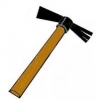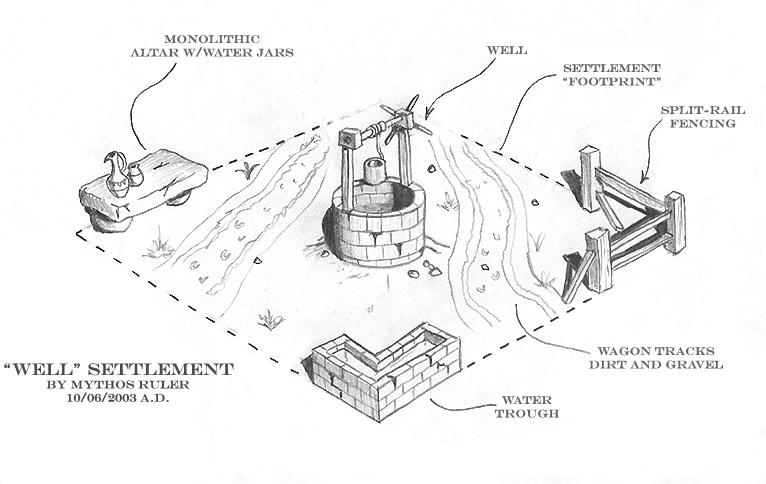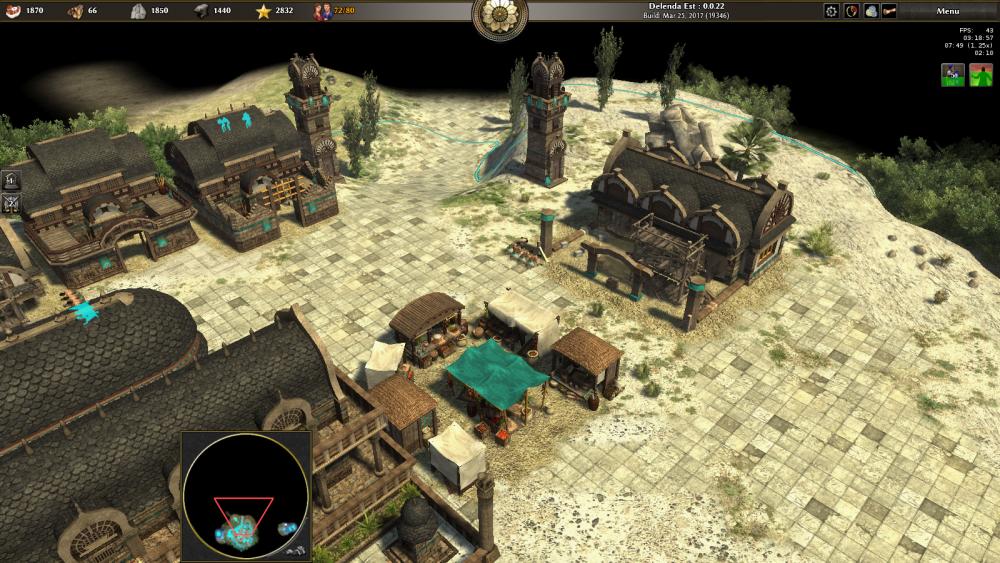Leaderboard
Popular Content
Showing content with the highest reputation on 2017-04-05 in all areas
-
The first and only comprehensive index for ancient language resources on the internet. Learning an ancient language is difficult, but it becomes more difficult if one isn’t part of a high school or college class or doesn’t have access to the more advanced resources of a university library. The natural solution is the internet, where some of those advanced resources are housed and where there is an abundance of materials intended to facilitate one’s study. However, there are a few problems when turning to the internet. … The solution to these problems is to unite all the resources under a single banner after reviewing them to see which are most useful. Lexicity has done this for 16 of the most prominent ancient languages. All the ancient language resources we feature are free and available to anyone; they’re easy to navigate, easy to sort, and easy to access. You don’t need to be an expert or be willing to wade through 50 pages of search engine results – just visit our languages page to get started.3 points
-
I've been playing a few games with dropsite removed from the civil center. I had to modify several things in the AI. (I didn't realize farmsteads are only partially treated as dropsites.) Also, I added a minimum range for farms. This made the AI create farms in a radius around the civil center. I was hoping that computer player would clump them around drop sites, but it appears to place them around the center even when resources cannot be dropped off there. I think the minimum range idea has some real potential, I like the effect of the minimum distance for farms even more then removing the dropsite from the civil center. It creates cities that actually look and function like cities should. The surrounding farmlands look great too. They look even better when grouped around the farmsteads. You have to spread out more to place the farms and you don't end up with city streets that need mowing... If someone knows an easy way to get the AI to place farms around the farmsteads, it would be appreciated. I ultimately ended up adding food dropsite to the storehouse to make the AI competitive because the AI wasn't building farms near the farmsteads.3 points
-
Fishing boats are generally not strong or fast enough to kill whales (or you may need a complete fleet of fishing boats). But war ships are normally strong enough, but you still need a fishing boat afterwards to collect the food. Manning the war ships doesn't make a difference though, as the auto-arrows won't target the neutral whale. And there's also the issue with the infinite-chase bug, where the ship will stop to aim, and the whale will have moved out-of-range by the time the shot can be fired. So all-in-all it's generally not worth to hunt whales for the moment.2 points
-
@Sundiata, here’s what I have gathered from the Osprey book, Rome’s Enemies (5): The Desert Frontier by David Nicolle, published in 1991. - Spears and bows were the basic weapons. Many bronze weapons were still in use in Meroitic Kush, along with iron. Melee infantry would have used great oval oxhide shields, and fought with broad-headed spears, axes, and occasionally Greco-Roman-style short swords. - Archers used leather quivers containing stone-and-iron-tipped wood or cane arrows (sometimes poisoned) - Many warriors would have had tattoos and scarred faces. - It seems that the Meroitic Kushites used elephants in ceremonies, and perhaps also occasionally in warfare. The kind of elephants used would probably have been the now-extinct North African elephant (Loxodonta africana pharaoensis) and/or the desert variation of the African bush elephant (Loxodonta africana africana). - Fortifications were built on pre-existing Egyptian structures, or else consisted of huge 3-storied citadels made of whitewashed mud-brick. I'm not sure what kind of cavalry Meroe would have had, but the book The Nubian Past: An Archaeology of Sudan by David N. Edwards, published in 2004, states that relief carvings suggest the warlike use of horses, and that several Meroitic kings were buried with horse harness. Make of that what you will.2 points
-
Hi. Let's remove dropsite ability from the Civic Center. Why would I propose this? Forces building storehouses and farmsteads from the start of a typical match, introducing the concept early. Refocuses the Civic Center on its primary purposes: training citizens, upgrading your settlement, and claiming territory. The player places new Civic Centers for optimal territorial claim, rather than as a forward dropsite which more often than not is not an optimal territorial claim. It's a soft encouragement to place farms around the farmstead instead of around the Civic Center. I can get rid of the "Civic Spaces" farming penalty. I know that there's also the defensive benefit to placing around the Civic Center, but it's a step in the right direction here.1 point
-
The only thing I don't like is the battalion. You can train in battalions or batches but units should operate individually. Formations should make up for battalion. Battalion is one of my dislike in RoN but it adds to gameplay. Yeah Rise of Nations has very good gameplay mechanics. My favorite game before I come across 0AD. AI's have better intelligence. Attrition, roads, limited caravan, supply wagon, border push, university, upgrade buildings, scouts, spies, leader or generals abilities. So many things can be done without much headaches but could make the game more enjoyable. I hope you focus more on single player mode because imo this game becomes dull when all the trees and animals die. Like in AoE2 when AI destroys the environment the game become so boring.1 point
-
Those icons mean the units (or buildings) are affected by an aura. Specifically by the aura caused by the unit or building you selected. F.e. if you select the temple, all units close enough to be in its healing aura will show the green plus. Details about the aura can be read by hovering the icon of the temple. Note that not all auras are range-based (some or global or even something else), and auras may also affect allies or enemies (in a good or bad way).1 point
-
@Zophim Thank you for the research! That's so funny, because I've just typed that very same chapter of that Osprey book in a word document, in order to share it here by Thursday… Great minds think alike A lot more stuff is coming, soon…1 point
-
1 point
-
Originally, the only way to set the resource type on traders was to set it per trader. A newly created trader was always spawned with a default resource type (metal IIRC), and every trader had to be clicked once to change its resource type. As a result, this was very unmanageable, as doing trading meant having to chase your traders all over the map to change their resources. Mimo then implemented better trader management by automatically assigning a new resource based on a global distribution. But that meant it was incompatible with the old way (or at least quite hard to combine the two approaches). Now the trade gives you a general expected distribution (the actual result still depends on a random selection), which is good enough for trading. If you want a more fine-grained control over the produced resources, you should use the resource-gathering units I guess.1 point
-
I like the direction of this thread… Don't forget the stables (I really think it's an important structure). Archery range is indeed not necessary. If you fear the building menu becoming too crowded, maybe think about a pop up build menu, instead of it being present by default when you click a unit, there could be a small button that brings up (an expanded) build menu. The button could just picture a saw and hammer, or something like that. Now you have all the space in the world Having a low level (specialized) Civic Center for expansionist or economic purposes, and a high level, more advanced CC for city building sounds awesome. I really like battalions, but I 'd like it even more if it was a tech you needed to research. This way the early phase fighters look like a rag tag bunch of warriors, which is very historically accurate. Early rushes would look like a barbarian horde coming to sack your settlement. Later armies would be highly organized and disciplined (battalions). This adds to realism and immersiveness, which is really important. It also offers the best of two worlds: Chaos vs. Order. Primitive vs. Advanced.1 point
-
Not bad ideas guys. 1. I think real logistics might be going too far, unless we metagame it a bit like Rise of Nations did. Or, there is attrition while in enemy territory, that can be alleviated by building Supply Depots that cost Food, which have an aura that prevents attrition. I don't officially propose this, just throwing the idea out there. 2. I like the idea that the village phase civic center looks really primitive. It should look primitive, since this is the very first founding of the city. 3. I am like your idea @Bazar about 2 different settlement or civic center types. This mirrors a lot what @DarcReaver has been saying and I was resisting, but you kind of put it in a way that made it click with me. Maybe it's possible for the player found different kinds of settlements, like trading posts and farming villages. They're essentially just like a city settlement, but can't advance beyond town phase and is prevented from building things like barracks and stone walls within their provinces, while a city settlement is a full settlement with all buildings available and phase advancement up to and including Capital Phase. What do other people think of this development? Is it too limiting? I could see unlocking these "econ settlements" in phase 1 or phase 2, then unlocking "city settlements" in phase 2 or 3. And capturing these different provinces inherently gives different outcomes or benefits, while losing them strikes different blows to your civilization. It hurts to lose them, but each in their own way, just like it's a boost to capture them, each in their own way. ----------------------------------- I'll sum up my proposal for units here, really quick. Slave - pure econ, very slowly dies when gathering, maybe heals when idle with a tech; perhaps has male and female versions with slightly different roles; see Delenda Est civ Principate Romans. Citizen - who can muster into militia when called via a town bell at Civic Center and at dropsites; has aura that boosts slave gathering, aka "Slave Masters"; who is the primary builder unit. Citizen-Solders - these are your cheap barracks military units that you use to mass for attacks or defense, who also boost slave gathering rates because they are citizens with the "Slave Masters" aura; who can build military buildings, but do not gather; who are trained as battalions. Champions - trained in battalions from fortress or special buildings; your professional soldiers; can upgrade each battalion individually with cool units to boost their battalion effectiveness or boost nearby citizen soldier battalions; limited training in some way, either hard limit or some sort of soft limit. Heroes - some, usually fighters like Leonidas or Scipio Africanus, are trained in battalions, while others, like Chanakya or Cleopatra, are trained as singles; number of auras is reduced and/or rebalanced.1 point
-
Wow, "weak countryside, strong core"this is the kind of mechanics I always wanted to see in age of empire or in any RTS actually. Nice to see im not the only one.In think it would be more coherent if all building that can be build in the neutral zone would cast at least a small territory. There would be a line for the national border, and another for the city-limits(that could appear only when you want to construct a building that as to be built within a city limits) So that way, you’ll have to build an Outpost or Dock that cast territory before you build a Storehouses and Farmsteads. Maybe you could also build wooden walls and wooden defences to protect those small outposts. it would go into the direction of = Outpost settlement - weak settlement for gathering ressources, conquer new shores or to take strategic point on the map City settlement - Strong settlement to expand dramatically territory, enable trading, build more buildings, armies and better defences SMALL DESIGN THOUGHT - I definitely think that civic center should look more like a camp at first and grows up as a real city center as the city changes phase. It would be the same for new City settlements. Something like that image (i like the idea around the well)1 point
-
1 point
-
I like your proposals. But why not let precious metal be mined as well, from quarries and outcrops, like stone? I really like the idea for building slots for quarries. But why should the gatherers die when the storehouse is destroyed? Shouldn't they just ungarisson from the mine? "But aside hills or in the sides of mountains or cliffs are Quarries" Yes! 1 other important question. Why is it possible to recruit horses without something like stables? Maintaining any number of horses is a tremendous amount of work, especially in a military context. Horsemen learning to ride properly, and training for cavalery combat can also take years. I always assumed stables or an analogue structure to enable the recruitment of cavalry units seemed obvious. And it would add another building to the building roster of every civ (more eye-candy/building diversity) In the same vane, I'd like to bring up the idea of a specialized economic building for each civ again. Just for the sake of having the semblance of an economy (None of our civs produce any finished products. What are they trading?). It could provide a small precious metal trickle and secondary economy-related technologies can be researched there. Perhaps they could even be a prerequisite for building a market. A specialized economic building can represent the ancient workshops or cash crop plantations that were such a vital life-line to every civ featured in the game.1 point
-
Did you illustrate that, Lion? nice. I will post a thread regarding my gameplay proposal and especially the citizen-soldier concept in a different thread. Since it is relevant to this thread, I will post the units/citizen-soldier concept here:1 point
-
To me the main reason why we're keeping all these Hellenistic factions is to not throw away the work that's already been done. I personally would probably have preferred to have fewer Hellenistic factions, and perhaps add one or two others, but it's not really the matter what I or anyone else think personally. What matters is what makes sense for the game, and from a development point of view. To me it's hard to argue for adding more factions as it's a lot of work even maintaining the ones we have and make sure they are as interesting to play as they can, and will be as balanced as they can be. I still don't think it's a good way to go to remove factions we already have though. Both because that would mean that the work put into them would have been wasted, and because we have said that the game will include these civilizations. Sure sometimes you have to change things, and remove things, even though you have said they will be included, but to remove something just to add something else instead doesn't seem like a good way to go. While I sometimes do use the word civilizations as well I prefer factions as the word civilization has some problematic connotations, i.e. is a group of people more or less civilized, or for that matter how do you define exactly what group of people is a civilization. A faction is simply a group that's been set apart as a unified group for this game, so it doesn't carry the same problems.1 point
-
@auron: For 0AD's city state time speed it might be the way to go. @glassPen: We will adopt your great proposal for 0AD Extended if you don't mind. Its speedy flow of time might be better suited for the growth speed of a tree: (day night cycles possibly have to trick a bit here and have to toggle on a per year basis instead of per day. Unrealistic, but else a game had to take real life years which is undesirable for a virtual time machine.) 10 minutes = 1 year ingame = 365,24 days ingame <=> 1 min = 36,524 days ingame <=> 1 hour = 6 years ingame <=> 2 hours = 12 years ingame Depending on how long you expect a game/time machine journey to take (assuming we have continuing saved games working), these might be alternative real vs. ingame time mappings: 10 minutes = 1 moon ingame = 29,7 days <=> 1 min = 2,97 days ingame <=> 1 hour = 6 months ingame <=> 2 hours = 1 year ingame With realistic day night cycles on a per day basis we had to use that time mapping, but an enduring from Antiquity to Modern times would take centuries, which tells us that this mapping can only work for 0AD Part 1 or 2 as those target city ages and not epochs (and thus a much smaller timeframe than 0AD Extended): 10 minutes = 1 day ingame = 24 h ingame => 1 min = 2,4 h ingame => 1 hour = 6 days ingame => 24 hours = 144 days = 1/2 year Though even for 0AD's city ages time speed a mapping like the following would be more realistic (here day night cycles had to trick a bit too and toggle on a per month/moon cycle instead of per 24 hours) real vs. ingame <=> 10 minutes real = 1 month ingame Edit: 0 B.C.E. finally should progress swifter than 1200 years ingame in 200 hours real life (RL), i.e. 1200 years in 40 hours RL: 10 minutes = 5 years ingame <=> 1 min = 1/2 year ingame <=> 1 hour = 30 years ingame <=> 2 hours = 60 years ingame1 point
-
A thought, what about farming trees? You could do it like a farm field, but with extremely long build/work times and small output. Like 15 trees for one field and 30 minutes of 5 workers "growing" the grove. But each tree would only have like 200 wood. Just a thought.1 point
-
Just a question, but how do you know at which point the resource at the curve is? If you want to let the player know, you could perhaps add a graph to the game UI.1 point
-
I don't know if that is something that have been thought before but I will give a idea regardless of the option chosen: resource regeneration could work only after the workers had stopped X time. This penalty is to prevent micro and make resource regeneration just a feature to make unlimited resources.1 point




.thumb.png.ce58cea22940c255f5b0a735d5abee36.png)






